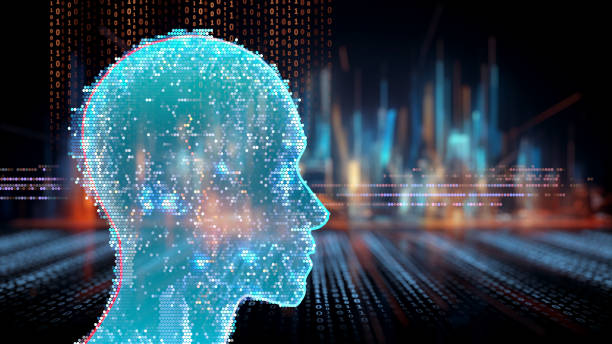What is an AI Robot: A Comprehensive Definition and Applications

#AI_Robot or (AI Robot) refers to a robot that, using #Artificial_Intelligence algorithms, is capable of performing tasks that usually require human intelligence.
These tasks can include learning, reasoning, problem-solving, natural language understanding, and machine vision.
Simply put, AI robots strive to simulate human cognitive abilities within a machine.
🤖
AI robots are used in a wide range of industries and applications.
These applications include:
- #Manufacturing_Industry: Performing repetitive and dangerous tasks, quality control, and increasing productivity.
- #Customer_Service: Answering questions, providing technical support, and processing transactions.
- #Healthcare: Diagnosing diseases, high-precision surgery, and providing personalized care.
- #Transportation: Autonomous driving and traffic management.
- #Education: Providing personalized education and evaluating student performance.
Generally, AI robots are designed and built with the aim of increasing efficiency, reducing costs, improving accuracy, and providing better services to humans.
Artificial Intelligence is a broad branch of computer science that aims to create machines that can perform tasks that typically require human intelligence.
Robotics is an engineering field that deals with the design, construction, operation, and application of robots.
Did you know that poor online store design can drive away up to 70% of your potential customers? Rasaweb transforms your sales with professional and user-friendly e-commerce website design.
✅ Significant increase in sales and revenue
✅ Full optimization for search engines and mobile
⚡ [Get free consultation from Rasaweb]
Main Components of an AI Robot
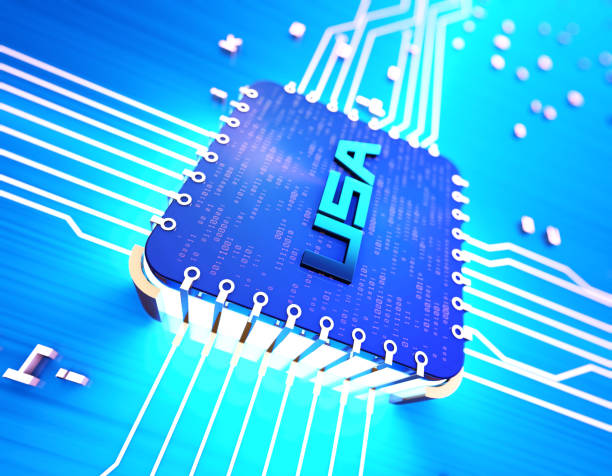
An AI robot typically consists of the following components:
- Sensors: For collecting information from the surrounding environment (such as cameras, microphones, temperature and pressure sensors).
- Processors: For processing collected information and making decisions based on AI algorithms.
- Actuators: For performing physical actions (such as motors, robotic arms, and wheels).
- Software: Including AI algorithms, operating system, and applications.
The AI algorithms used in robots can be very diverse and are selected depending on the intended application.
Some of the most common algorithms include:
- #Machine_Learning: Enables the robot to learn from data and improve its performance.
- #Neural_Networks: Complex computational models used for pattern recognition, prediction, and decision-making.
- #Natural_Language_Processing: Enables the robot to understand human language and communicate with it.
- #Computer_Vision: Enables the robot to process images and videos and recognize objects.
These components work together to enable the AI robot to perform various tasks autonomously and intelligently.
Artificial intelligence in robots gives them the ability to adapt to environmental changes and make better decisions.
Types of AI Robots Based on Application

AI robots can be divided into different categories based on their applications.
Some of these categories include:
- Industrial Robots: For performing repetitive and heavy tasks in production lines.
These robots usually have high precision and speed and can work around the clock. - Service Robots: For providing various services to humans in domestic, commercial, and public environments.
These robots can include vacuum cleaner robots, nursing robots, waiter robots, and security robots. - Medical Robots: To assist doctors and nurses in diagnosing, treating, and caring for patients.
These robots can include surgical robots, rehabilitation robots, and pharmacy robots. - Military Robots: For performing dangerous and difficult tasks on the battlefield.
These robots can include reconnaissance robots, bomb disposal robots, and combat robots. - Space Robots: For space exploration and scientific research in environments inaccessible to humans.
These robots can include Mars rovers and lunar rovers.
Each of these categories has its own unique characteristics and capabilities and is designed to perform specific tasks.
Robot types are constantly evolving, and with the advancement of #Artificial_Intelligence, new applications are discovered for them.
| Robot Type | Applications |
|---|---|
| Industrial | Manufacturing, Packaging, Assembly |
| Service | Cleaning, Care, Catering |
| Medical | Surgery, Rehabilitation, Pharmacy |
| Military | Reconnaissance, Bomb Disposal, Combat |
| Space | Exploration, Scientific Research |
Challenges and Limitations of AI Robots
![]()
Despite their vast potential, AI robots also face challenges and limitations:
- High Cost: Developing and manufacturing AI robots is usually expensive.
- Complexity: Designing and programming AI robots requires high knowledge and expertise.
- Technical Limitations: AI robots still have limitations in some areas, such as understanding emotions and making ethical decisions.
- Ethical Issues: The use of AI robots can raise serious ethical issues, such as job displacement and discrimination.
- Security: AI robots can be vulnerable to cyberattacks and be exploited.
To address these challenges and limitations, further research and development are needed in various fields of #Artificial_Intelligence, robotics, and social sciences.
Also, appropriate laws and regulations for the use of AI robots must be developed to prevent their misuse.
🤖
Overall, AI robots can help humans in many tasks, but their limitations and ethical issues must also be considered.
Are you tired of your company’s website not being seen as it deserves, losing potential customers? Solve this problem forever with professional and effective website design by Rasaweb!
✅ Increase brand credibility and gain customer trust
✅ Attract targeted sales leads
⚡ Contact us now for a free consultation!
What Will Be the Future of AI Robots?
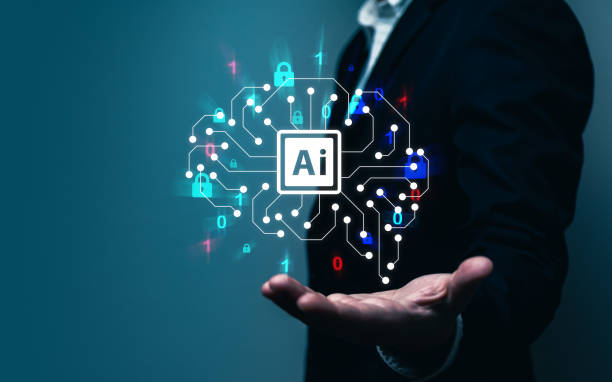
The future of AI robots is very bright and full of potential.
With continuous advancements in #Artificial_Intelligence and robotics, it is expected that AI robots will play a much more significant role in our lives in the near future.
Some predictions about the future of AI robots include:
- Increased use of robots in various industries: Robots will be used in a wider range of industries and applications in the future.
- Development of autonomous robots: Autonomous robots will be able to move in various environments and perform their tasks without human intervention.
- Creation of humanoid robots: Humanoid robots, with an appearance similar to humans, will be able to interact naturally with humans and perform various tasks.
- Integration of robots with the Internet of Things: The integration of robots with the Internet of Things (IoT) will enable information exchange and coordination between robots and other devices.
- Development of Artificial General Intelligence: The development of Artificial General Intelligence (AGI) will enable the creation of robots with intelligence equal to or greater than humans.
Of course, realizing these predictions requires extensive efforts in research and development, as well as solving ethical and social issues related to the use of AI robots.
🤖
Ultimately, the future of AI robots depends on our ability to manage and control this powerful technology.
The future of artificial intelligence, with continuous advancements, allows robots to play a greater role in our daily lives.
The Role of AI Robots in the Manufacturing Industry

The manufacturing industry is one of the fields where AI robots play a very important role.
These robots can help humans in repetitive, heavy, and dangerous tasks and lead to increased productivity and reduced costs.
🤖
Some applications of AI robots in the manufacturing industry include:
- Assembly of parts: Robots can assemble various parts with high precision and speed.
- Welding: Robots can perform high-quality welding without danger to humans.
- Painting: Robots can perform painting uniformly and without flaws.
- Quality control: Robots can accurately and quickly inspect product quality.
- Packaging: Robots can automatically package products.
The use of AI robots in the manufacturing industry reduces costs, increases productivity, improves product quality, and reduces risks for humans.
Manufacturing robots, using artificial intelligence, can perform more complex tasks and help improve production processes.
Also, AI robots can help in producing customized products.
By using these robots, products can be easily designed and manufactured based on the specific needs of each customer.
Applications of AI Robots in Medicine and Treatment

AI robots also have numerous applications in medicine and treatment.
These robots can assist doctors and nurses in diagnosing, treating, and caring for patients.
🤖
Some applications of AI robots in medicine and treatment include:
- Surgery: Robots can perform surgery with high precision and minimal damage to healthy tissues.
- Rehabilitation: Robots can help patients perform rehabilitation exercises.
- Pharmacy: Robots can produce medicines with high precision and without errors.
- Disease diagnosis: Robots can help diagnose diseases by analyzing medical images and patient data.
- Patient care: Robots can care for patients at home or in the hospital and meet their needs.
The use of AI robots in medicine and treatment improves accuracy, reduces risks, increases speed, and lowers costs.
Medical robots, using artificial intelligence, can assist doctors in complex decision-making and help improve the quality of patient care.
| Robot Type | Applications in Medicine |
|---|---|
| Surgical Robot | Precise and minimally invasive surgery |
| Rehabilitation Robot | Assisting patients in exercises |
| Pharmacy Robot | High-precision drug production |
| Diagnostic Robot | Diagnosing diseases through imaging |
| Nursing Robot | Patient care and monitoring |
AI Robots and the Future of Jobs
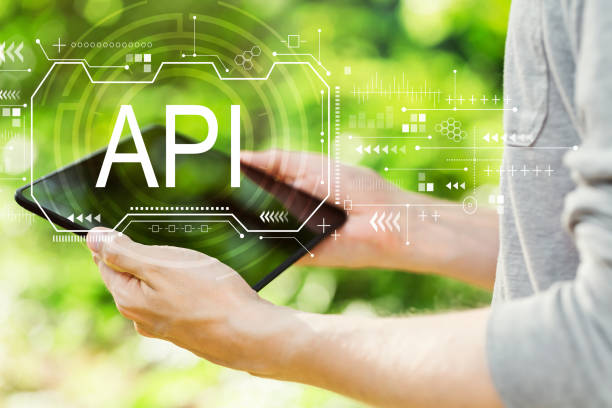
One of the main concerns regarding the widespread use of AI robots is its impact on the future of jobs.
Some experts believe that robots can replace many jobs and lead to increased unemployment.
🤖
While this concern is partly true, it should be noted that robots can also create new jobs and lead to increased productivity and economic growth.
Some jobs that are likely to be affected by AI robots include:
- Repetitive and routine jobs: These jobs can easily be performed by robots.
- Dangerous jobs: Robots can perform dangerous jobs without risk to humans.
- Low-skill jobs: Robots can perform low-skill jobs at a lower cost.
Some jobs that are likely to be created by AI robots include:
- Development and maintenance of robots: The need for specialists in developing and maintaining robots will increase.
- Training and education of robots: The need for specialists in training and educating robots will increase.
- Management and supervision of robots: The need for managers and supervisors to manage and supervise robots will increase.
To mitigate the negative impact of AI robots on the future of jobs, individuals need to acquire new skills and adapt to technological changes.
The future of jobs indicates that soft skills such as critical thinking, problem-solving, and creativity will become more important.
Also, governments and organizations need to adopt policies that protect individuals from job loss and help them acquire new skills.
Is your company’s website not as professional and trustworthy as it should be? With specialized corporate website design by Rasaweb, create an online presence that reflects your credibility and attracts more customers!
✅ Building a powerful and professional image for your brand
✅ Converting visitors into real customers
⚡ Get a free consultation now!
Ethical Issues of Using AI Robots
![]()
The use of AI robots raises serious ethical issues that need to be addressed.
One of these issues is responsibility.
If an AI robot makes a mistake, who is responsible? The robot’s manufacturer? The robot’s user? Or the robot itself? 🤖
Another issue is privacy.
AI robots can collect a lot of information about users.
How can this information be protected and prevented from being misused?
The third issue is discrimination.
AI robots can make discriminatory decisions based on their training data.
How can this discrimination be prevented?
The fourth issue is security.
AI robots can be exploited and used for malicious purposes.
How can the security of AI robots be ensured?
To solve these ethical issues, appropriate laws and regulations for the use of AI robots must be developed.
Also, professional ethics in the field of #Artificial_Intelligence must be promoted, and AI specialists must pay attention to ethical issues.
🤖
Overall, AI robots can have many benefits, but their ethical issues must also be considered and addressed.
AI ethics is an important developing field whose goal is to create frameworks for the responsible use of this technology.
How to Build an AI Robot: A Step-by-Step Guide
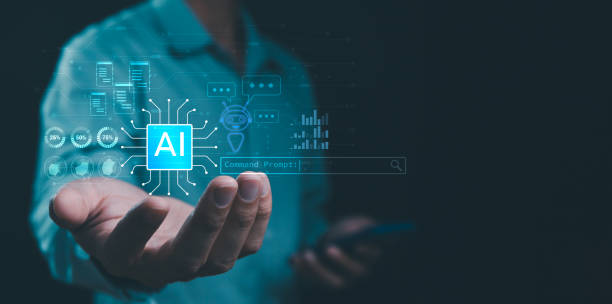
Building an AI robot is a complex project that requires knowledge and expertise in various fields, including #Artificial_Intelligence, robotics, programming, and electronics.
Here’s a step-by-step guide to building an AI robot:
- Define the Goal: First, you need to specify the goal of building your AI robot.
What will your robot do? - Choose a Platform: Select a suitable platform for building your robot.
Various platforms exist for building robots, including Arduino, Raspberry Pi, and ROS. - Gather Components: Gather the necessary components for building your robot, including sensors, motors, processor, and power supply.
- Programming: Program your robot.
For this, you can use various programming languages, including Python, C++, and Java. - Training: Train your robot.
For this, you can use various training data. - Testing: Test your robot.
After building and programming the robot, test it to ensure it works correctly. - Optimization: Optimize your robot.
After testing the robot, optimize it to perform better.
Building an AI robot is a continuous learning process.
Through trial and error, you can improve your robot and add new capabilities to it.
Robot building requires patience and perseverance, but the final result can be very rewarding.
Remember that building an AI robot requires time, effort, and cost.
But if you are interested in this field, it will be a very engaging and educational project.
Frequently Asked Questions
| Question | Answer |
|---|---|
| What is an AI robot? | It is a robot that uses artificial intelligence capabilities to understand its environment, reason, learn, and make decisions to perform complex tasks independently. |
| What is the main difference between a regular robot and an AI robot? | AI robots can learn and adapt to their environment, while regular robots usually operate based on fixed and pre-defined programs. |
| In what areas are AI robots used? | In areas such as industry (production lines), medicine (robotic surgeries), services (customer support, smart vacuum cleaners), exploration (space and underwater), and entertainment. |
| How do AI robots learn? | They acquire new skills through Machine Learning and Deep Learning algorithms, by analyzing large data and identifying patterns. |
| Can AI robots have emotions? | Currently, no. They can identify or simulate emotions, but they do not experience real emotions like humans. |
| What are the most important benefits of using AI robots? | Increased productivity, reduced human error, performing dangerous or repetitive tasks, and providing innovative and efficient services. |
| What challenges exist in the development of AI robots? | Need for abundant and high-quality data, complexity of algorithms, ethical issues, cybersecurity, and high research and development costs. |
| Are AI robots dangerous to humans? | With adherence to safe design principles and ethical regulations, no. Concerns are more related to social and economic impacts such as changes in the job market. |
| What is an example of an AI robot in daily life? | Smart vacuum cleaner robots (like Roomba) that automatically map and clean the house, or smart voice assistants (like Siri and Alexa). |
| How is the future of AI robots predicted? | They are expected to become smarter, more autonomous, and capable of more complex interactions with humans, playing a more prominent role in industry, medicine, transportation, and daily life. |
And other advertising agency Rasaweb services in the field of advertising
- Smart Website Development: Professional optimization to increase website traffic by customizing user experience.
- Smart Customer Journey Map: Revolutionize sales with precise audience targeting.
- Smart Marketing Automation: A professional solution for online growth focusing on custom programming.
- Smart Website Development: A professional solution for attracting customers by focusing on using real data.
- Smart Advertising Campaign: An effective tool for attracting customers with a focus on SEO-driven content strategy.
And hundreds of other services in the field of internet advertising, advertising consultation and organizational solutions
Internet Advertising | Advertising Strategy | Advertorials
Resources
What is an AI Robot? Complete Guide
The Future of AI Robots and Their Impact on Life
Applications of Smart Robots in Industry
Artificial Intelligence Technology and Future Developments
? Are you ready to revolutionize your business in the digital space? Rasaweb Digital Marketing Agency, by providing specialized and integrated solutions, including advanced WordPress website design services, helps you to have a powerful and prominent presence in the online world.
📍 Tehran, Mirdamad Street, next to Central Bank, Southern Kazerun Alley, Ramin Alley No. 6

